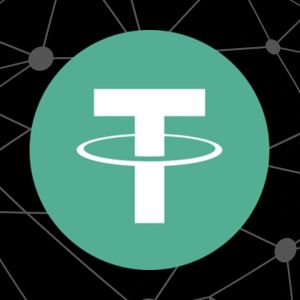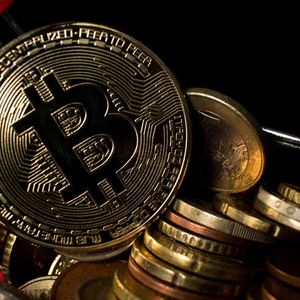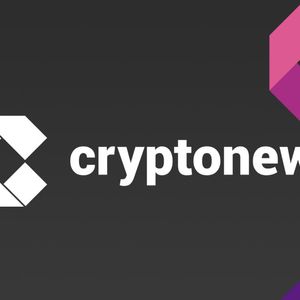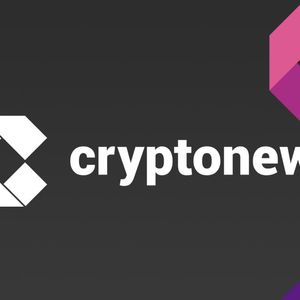Ripple reportedly offered $4–5 billion to acquire Circle, the issuer of the second-largest U.S. dollar-pegged stablecoin, USDC, in a bold strategic move that could redefine the global financial landscape. While the deal has not materialized—at least not publicly—the mere existence of such a proposal reveals Ripple’s ambitions are far greater than launching another stablecoin. This isn’t about market competition. It’s about consolidation, infrastructure control, and becoming the backbone of the next-generation financial system. This perspective was brought to public attention by crypto analyst and macro strategist Stellar Rippler, whose deep-dive thread on X outlines how this rumored acquisition attempt fits into a broader geopolitical and technological power play. According to Stellar Rippler, the timeline of events suggests that Ripple’s offer was anything but arbitrary. It was a calculated maneuver with implications stretching far beyond stablecoin dominance. (1/ ) Why would Ripple, which is launching its own stablecoin ($RLUSD), try to acquire a direct competitor? Because it’s not about competition — it’s about consolidation. Let’s break down what no one’s saying: pic.twitter.com/vSmEsdPB8A — Stellar Rippler (@StellarNews007) April 30, 2025 From RLUSD to USDC: A Strategic Timeline Ripple’s stablecoin, RLUSD, was officially announced in May 2024. Designed to run natively on both the XRP Ledger and Ethereum, RLUSD was Ripple’s attempt to enter the highly saturated stablecoin market. However, entering the arena as a newcomer poses significant challenges. Market leaders like Tether (USDT) and Circle’s USDC already dominate liquidity pools, trading pairs, and user adoption across centralized and decentralized platforms. While Ripple geared up for RLUSD’s rollout, Circle was strengthening its foothold. USDC expanded to more blockchain networks, deepened relationships with U.S. financial partners like Visa and Stripe, and positioned itself as the leading “compliant” stablecoin within U.S. regulatory frameworks. By late 2024, whispers emerged about tensions regarding Circle’s valuation and internal governance, coinciding with what appears to have been Ripple’s $5 billion acquisition overture. The timing was anything but coincidental. With RLUSD still in its infancy and USDC leading in institutional trust and regulatory favor, Ripple likely recognized an opportunity to skip the steep uphill climb of organic stablecoin adoption. Acquiring Circle would mean instant access to a fully mature liquidity network, trusted reserve infrastructure, and an embedded position in the evolving regulated crypto-financial ecosystem. A Play for Infrastructure, Not Competition On paper, Ripple and Circle might appear to be competitors. But in practice , they serve complementary functions that, if combined, could transform Ripple into something far more powerful: a consolidated, end-to-end financial stack provider. While Ripple already powers cross-border payments and CBDC solutions for governments and financial institutions via the XRP Ledger and its CBDC platform, it lacks a dominant retail stablecoin with widespread integration across consumer-facing platforms. USDC fills that gap. USDC is one of the most widely adopted stablecoins and the most institutionally favored. It’s fully backed by U.S. Treasuries, integrated into platforms like Robinhood and Visa, and often cited in U.S. policy discussions as the gold standard for compliant digital dollars. By acquiring Circle, Ripple wouldn’t just gain a stablecoin—it would inherit a ready-made network of payment rails, regulatory goodwill, and real-world utility. Such a move would instantly position Ripple as the default settlement layer for both retail-facing stablecoins and wholesale CBDCs, blurring the lines between what are currently separate financial silos. In essence, Ripple wouldn’t just be competing with traditional banks and payment processors—it would be building a parallel financial system. Reimagining the Role of RLUSD A critical question raised by this scenario is the future role of RLUSD . If Ripple owns USDC, does RLUSD become obsolete? Not necessarily. The two could coexist as part of a tiered financial architecture. USDC, with its broad consumer base and merchant integrations, would remain the retail-facing stablecoin. RLUSD, on the other hand, could evolve into a wholesale rail designed for institutional liquidity corridors, government-to-bank CBDC pipelines, and enterprise-level settlements. We are on twitter, follow us to connect with us :- @TimesTabloid1 — TimesTabloid (@TimesTabloid1) July 15, 2023 This dual-stablecoin model would offer Ripple remarkable flexibility. By housing a trusted retail stablecoin and an optimized wholesale token under one umbrella, Ripple could streamline everything from microtransactions to central bank settlements—all without relying on third-party infrastructure. Regulatory Alignment and the Shadow of Tether The stablecoin landscape is increasingly shaped by regulatory scrutiny. Tether (USDT), while still the market leader in volume, faces ongoing questions about transparency and compliance. USDC, by contrast, is emerging as the regulatory favorite—a position that would be immensely valuable to Ripple, whose strategy has long hinged on legal clarity and institutional trust. Owning USDC would position Ripple as the U.S. government’s most viable private-sector partner for regulated digital value. In an environment where regulatory compliance determines survival, that alignment isn’t just useful—it’s existential. A Signal to the Market—and a Vision for the Future While the Ripple–Circle deal may ultimately remain unrealized, the fact that Ripple was reportedly willing to spend over $5 billion speaks volumes. It signals a vision that goes far beyond stablecoin competition. Ripple isn’t trying to win a share of the market—it’s trying to become the market. Through strategic acquisitions, network expansion, and regulatory alignment, Ripple is constructing a global financial infrastructure stack capable of absorbing the current system and upgrading it for a tokenized, interoperable future. This approach echoes the core message from Stellar Rippler’s analysis: Ripple’s stablecoin ambitions are not about challenging Circle—they’re about integrating it. Ripple’s potential integration of stablecoin infrastructure with XRP-powered systems could redefine its position beyond fintech. It would be a sovereign-grade financial network operating parallel to legacy systems—and potentially replacing them. The Ripple–Circle story may not be over. But even in its rumored form, it has shifted the conversation from competition to consolidation, products to infrastructure, and speculation to system-building. And that may be the most important signal of all. Disclaimer : This content is meant to inform and should not be considered financial advice. The views expressed in this article may include the author’s personal opinions and do not represent Times Tabloid’s opinion. Readers are urged to do in-depth research before making any investment decisions. Any action taken by the reader is strictly at their own risk. Times Tabloid is not responsible for any financial losses. Follow us on Twitter , Facebook , Telegram , and Google News The post Why Ripple Offered $5 Billion to Acquire Stablecoin Issuer Circle appeared first on Times Tabloid .


















